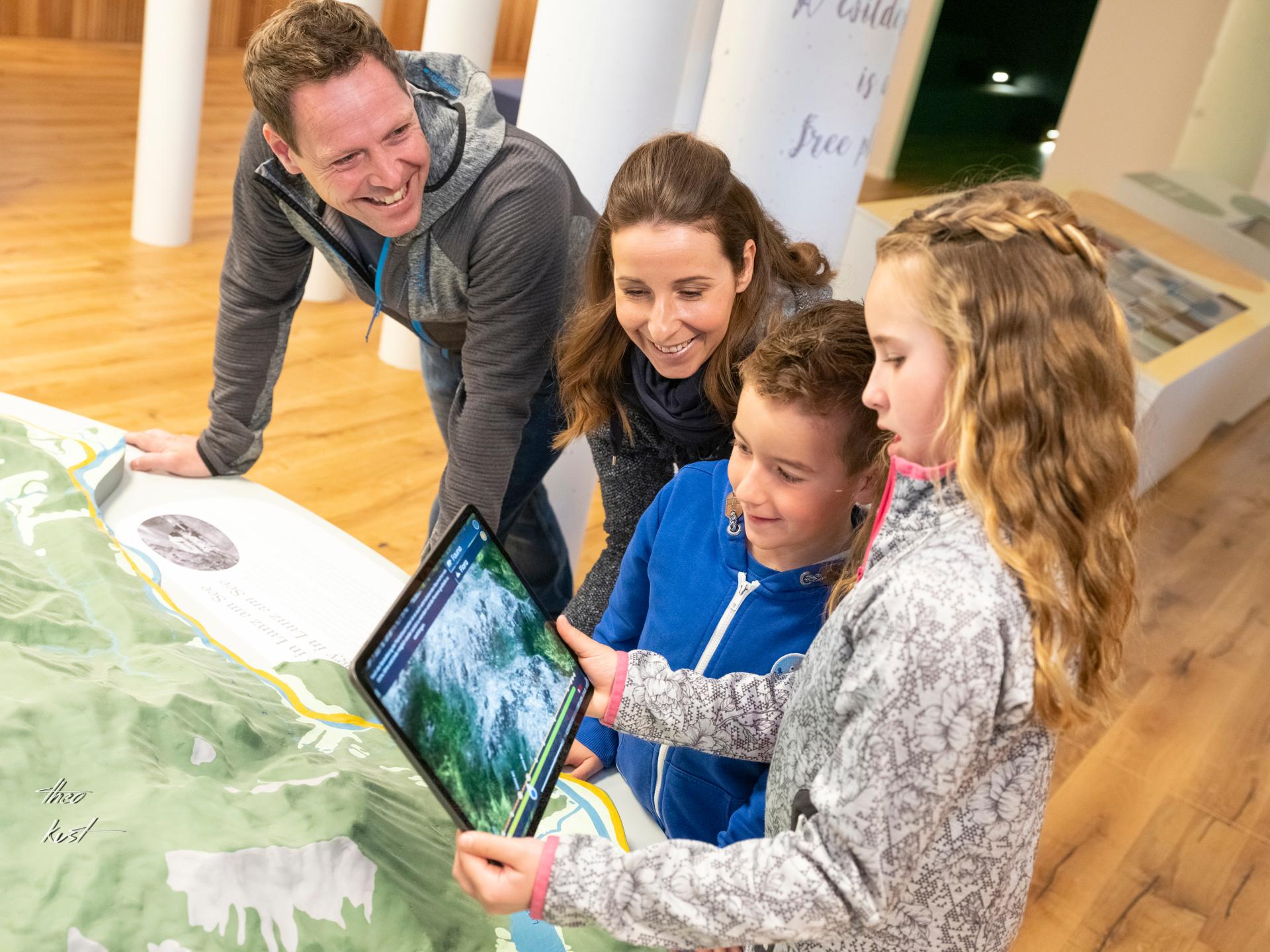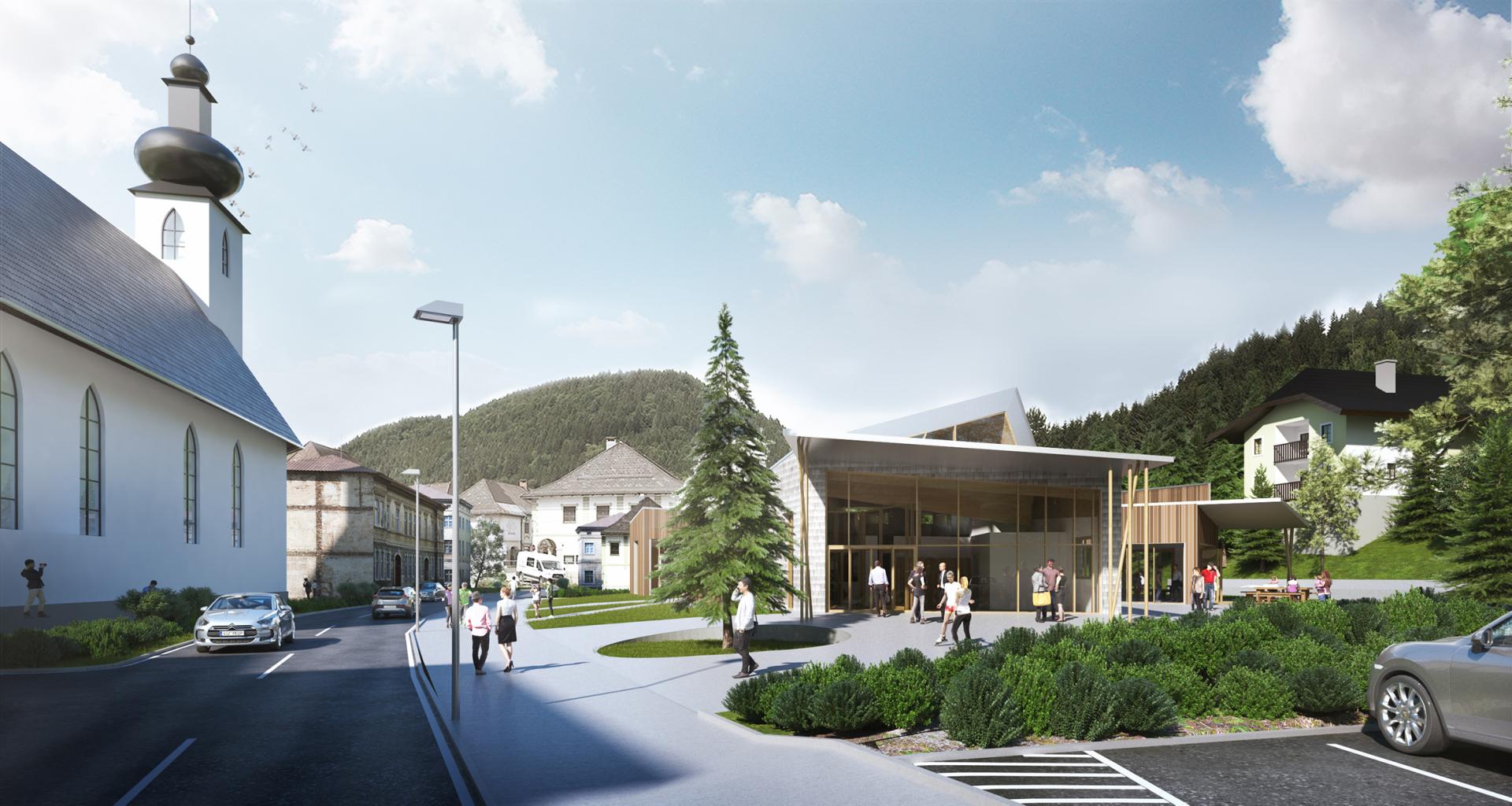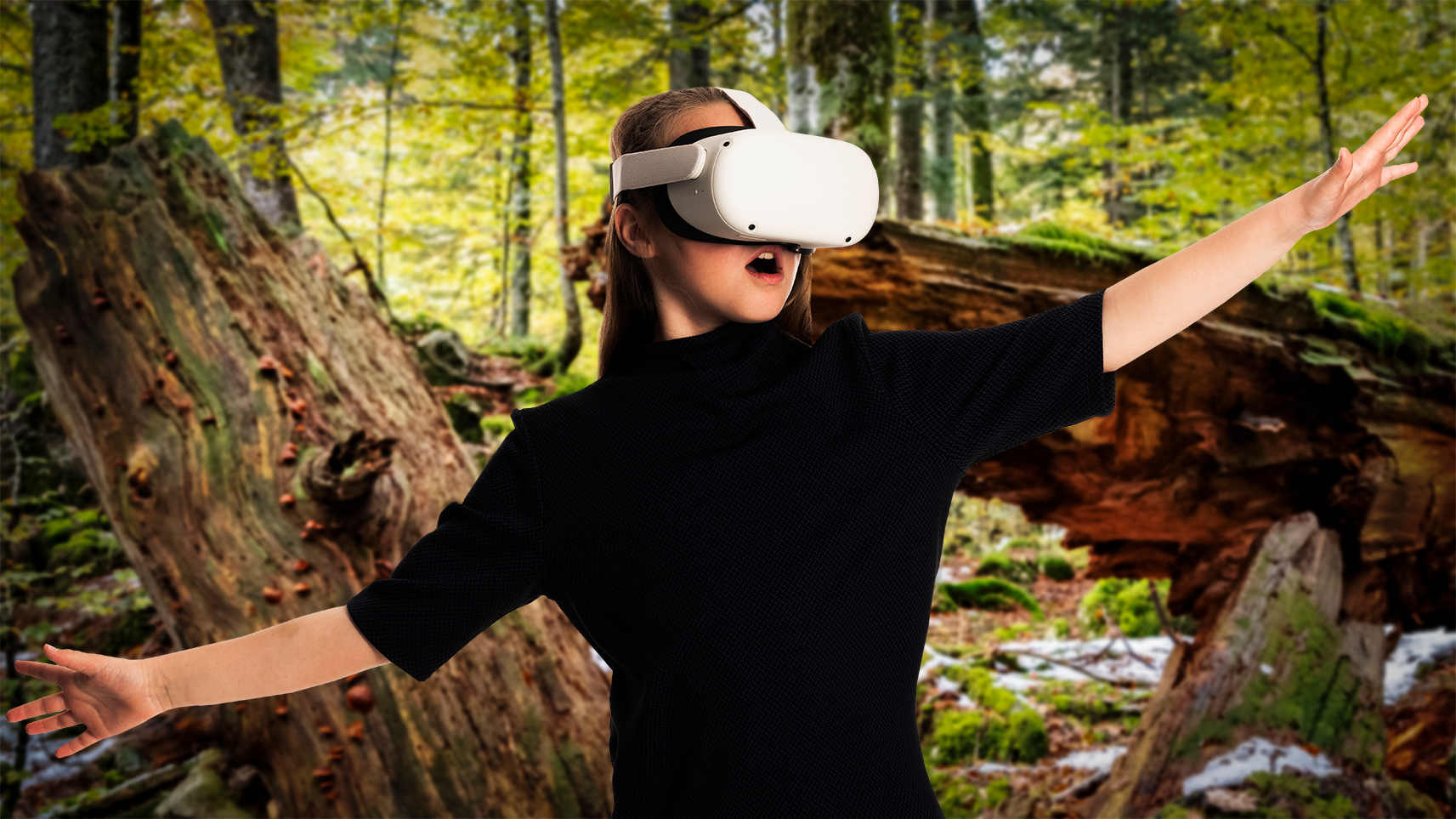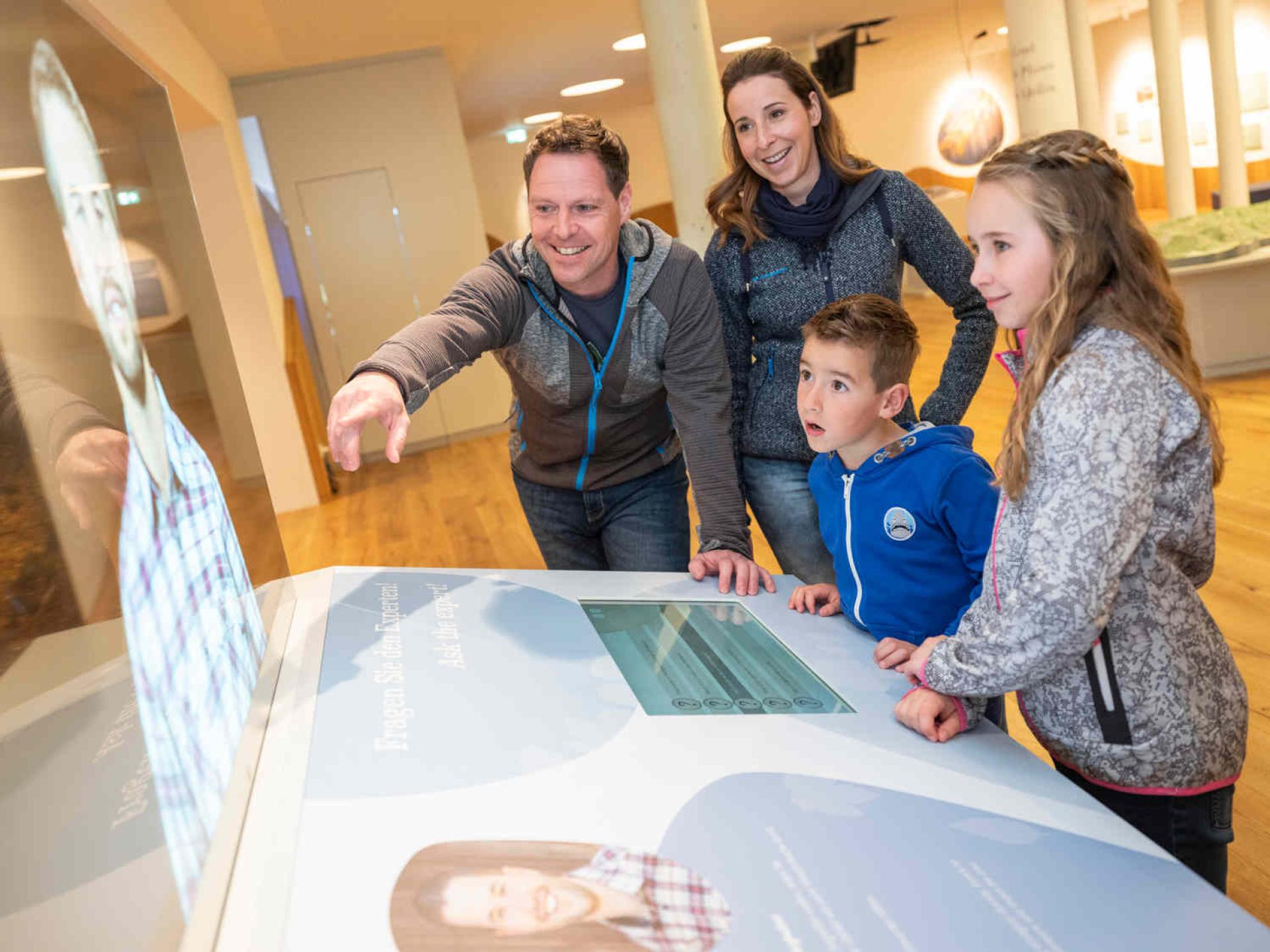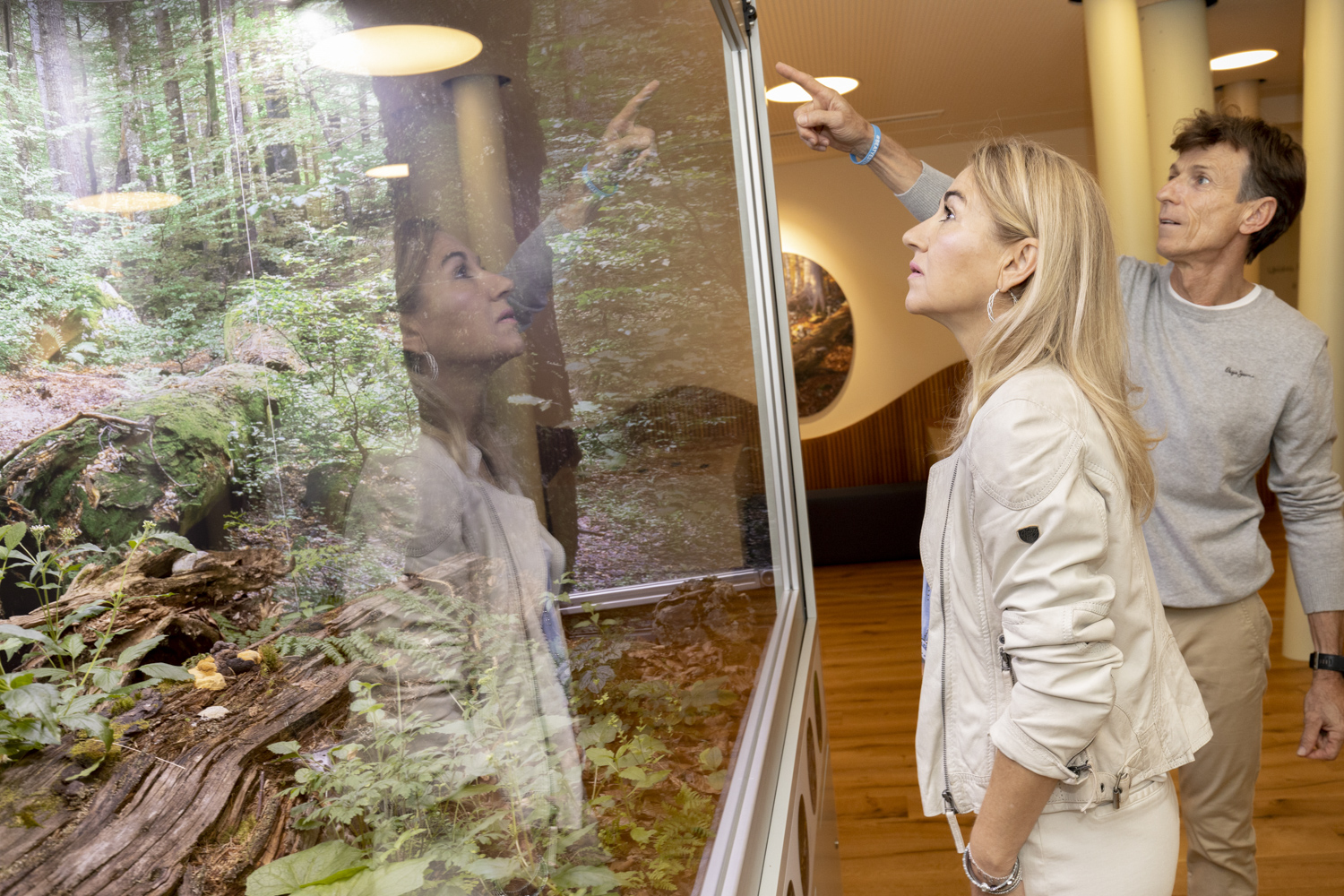House of Wilderness
Basic information
Project Title
Full project title
Category
Project Description
The House of Wilderness represents a community project that was realized by numerous regional companies, private individuals and other responsible parties. In the House of Wilderness you can get closer to the unique spruce-fir-beech primeval forest in Austria than ever before. The modern and interactive exhibition makes the complex relationships in the UNESCO World Heritage Site and its uniqueness accessible to all.
Project Region
EU Programme or fund
Which funds
Other Funds
The entire exhibition was financed through the EU Rural Development Program, or EAFRD or LE. The project was realized from 2019 to 2021
Description of the project
Summary
88% of the area of the wilderness area Dürrenstein in Lower Austria, Austria is without human intervention. Here the natural process dynamics are allowed. The 400 ha heart of the wilderness area is a primary wilderness and the last large primeval forest remnant of the Alpine arc (montane mixed mountain forest with approx. ⅓ copper beech, ⅓ fir and ⅓ spruce). Pollen analysis from soil samples has scientifically confirmed continuous forestation after the last ice age. Access is regulated (either guided walks or only on marked trails) and research is also subject to strict conditions. in 2017 the Wilderness Area Dürrenstein was also declared as World Heritage Site.
By preserving unique, untouched natural areas, it will be possible for our children and grandchildren to experience original, intact nature. Our responsible task is to find a balance between protecting the undisturbed development of nature and opening it up as a space for people to experience and learn.
Our goal was to build a vivid bridge of experience between the wilderness area, the visitors and science. In the House of Wilderness, our modern exhibition and wide range of programs provide people of all ages with understandable knowledge about complex natural processes.
Here you can get closer to the unique primeval forest than ever before. The modern and interactive exhibition makes the complex interrelationships in nature and its uniqueness accessible to everyone.
Since the House of Wilderness is a project in the service of all people, its planning, financing and construction was also conceived as a joint project. Numerous private individuals, companies and the province of Lower Austria have put themselves at the service of this cause and have thankfully contributed significantly to its planning and construction.
Key objectives for sustainability
Not only the contents of the Haus der Wildnis are unique, but also its location and its history are extraordinary.
In Austria, around 150,000 m² are newly sealed every day. The House of Wilderness was already built on a construction site that was abandoned over 15 years ago. Thus, no new area or important habitats were sealed and obstructed by the construction of the building, but existing building fabric was used.
This sustainable approach was also continued in the construction of the house.
With the involvement of regional businesses, the House of Wilderness was built using sustainable lightweight wood construction. On the exterior façade, 200 m² of wooden shingles were installed and the interior cladding also comes largely from wood-based panels.
Key objectives for aesthetics and quality
With the construction of the House of Wilderness, a modern and contemporary connection to the World Natural Heritage Wilderness Area Dürrenstein was to be created. There should also be a certain arbitrariness in relation to the building - as it also occurs in the primeval forest. The design is inspired by natural structures that do not follow a straight line. Trees fall down, merge into each other, form a hollow space in which living creatures find room. The five "tree trunks" in the structure are nested within each other and are home to the interior and the exhibition.
The building is very translucent due to its many large window surfaces - one can see the sky, the mountains and the entire panorama of the village of Lunz am See.
The design of the exterior surfaces was also strongly influenced by the wilderness. Biodiversity islands, deadwood logs and wildflower meadows can be found around the House of Wilderness.
Key objectives for inclusion
From the outdoor facilities to the exhibition - everything has a very modern layout and barrier-free access. Using the latest technology such as augmented reality tablets, VR headsets and interactive info touch screens, the content of the exhibition is presented in a way that is easy to understand and exciting for all ages and backgrounds. Furthermore, in addition to a lift, the heights of the touch screen consoles and the use of the VR headsets are adapted to a visit with a wheelchair.
Results in relation to category
The previously existing construction site in the middle of the town center was an eyesore for the small town of Lunz am See for over 15 years. Nobody wanted to take on this project.
Thanks to the efforts of the Wilderness Area Dürrenstein administration, together with the municipality of Lunz, this unused concrete area including basement was used as the basis for the project "House of Wilderness".
The House of Wilderness was completed in April 2021 and is already making waves in the region. In the building of the house of the wilderness is since recent times the only café in Lunz am See. In anticipation of corresponding tourist flows, a hotel project was also launched in the immediate vicinity of the Haus der Wildnis at the beginning of 2021. The House of Wilderness represents a tourism lighthouse project that will have a lasting positive impact on the region.
How Citizens benefit
The House of Wilderness is a community project. In 2017, the Dürrenstein-Lassingtal Wilderness Area was declared Austria's first World Heritage Site by UNESCO. This means that the world is committed to preserving this habitat, which is particularly worthy of protection, for future generations. Other natural jewels with this distinction are, for example, the Grand Canyon, Yellowstone National Park or the Dolomites.
In order to live up to this high distinction, the province of Lower Austria decided in 2018 to build the World Heritage Center House of Wilderness in Lunz am See together with private supporters.
Since the Haus der Wildnis is a project serving all people, its planning, financing and construction was also conceived as a joint project. Numerous private individuals and companies have put themselves at the service of this cause and have thankfully contributed significantly to the planning and construction. The province of Lower Austria, as part of a joint project for the development of rural areas, provided for the exhibition and interior design.
Through the exemplary interaction of all forces, it has been possible to realize an important nature conservation project.
Innovative character
The House of Wilderness project is a very innovative and unique project in many ways!
The previously existing construction site in the middle of the town center was an eyesore for the small town of Lunz am See for over 15 years. Nobody wanted to take on this project.
Thanks to the efforts of the Wilderness Area Dürrenstein administration, together with the municipality of Lunz, this unused concrete area including basement was used as the basis for the project "House of Wilderness".
With the construction of the House of Wilderness, a modern and contemporary connection to the World Natural Heritage Wilderness Area Dürrenstein was to be created. There should also be a certain arbitrariness in relation to the building - as it also occurs in the primeval forest. The design is inspired by natural structures that do not follow a straight line. Trees fall down, merge into each other, form a hollow space in which living creatures find room. The five "tree trunks" in the structure are nested within each other and are home to the interior and the exhibition.
The building is very translucent due to its many large window surfaces - one can see the sky, the mountains and the entire panorama of the village of Lunz am See.
The design of the exterior surfaces was also strongly influenced by the wilderness. Biodiversity islands, deadwood logs and wildflower meadows can be found around the House of Wilderness.
From the outdoor facilities to the exhibition - everything has a very modern layout and barrier-free access. Using the latest technology such as augmented reality tablets, VR headsets and interactive info touch screens, the content of the exhibition is presented in a way that is easy to understand and exciting for all ages and backgrounds. Furthermore, in addition to a lift, the heights of the touch screen consoles and the use of the VR headsets are adapted to a visit with a wheelchair.

